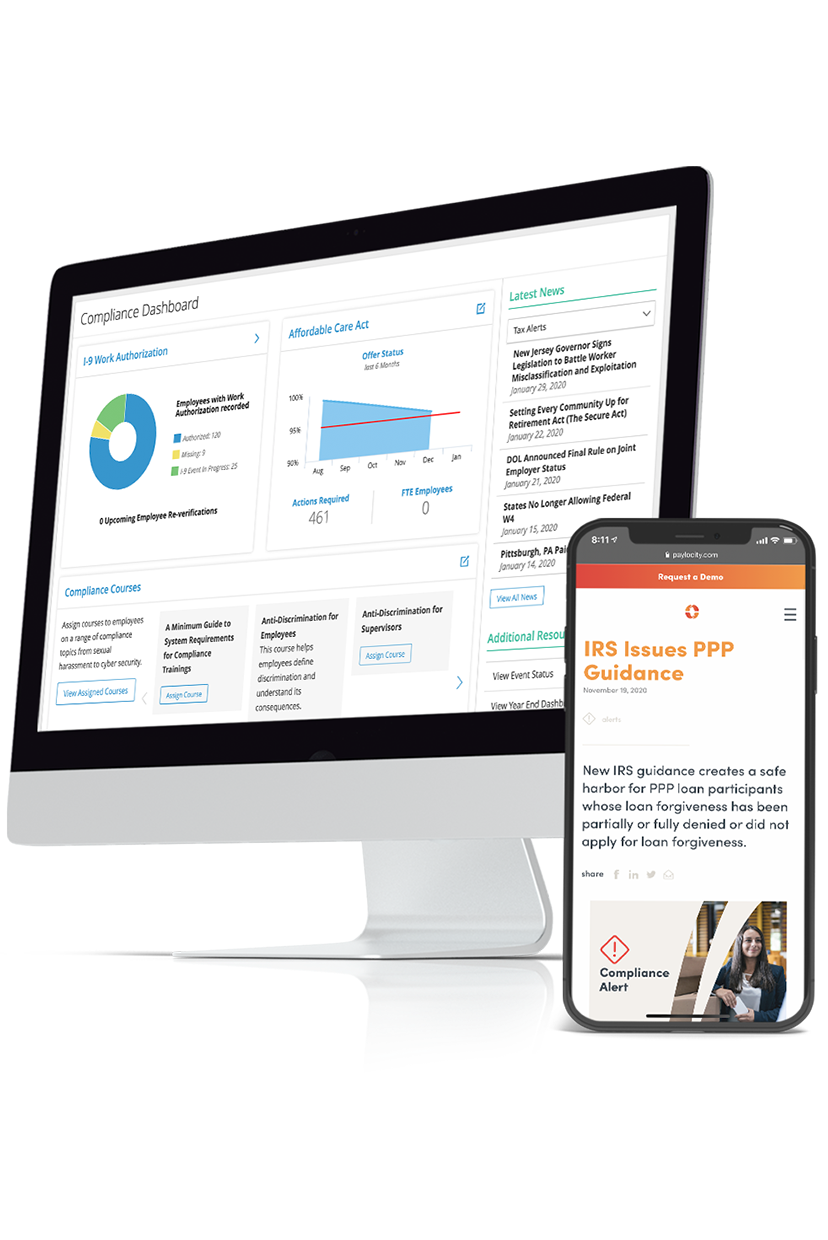resources
Regulatory Roundup June 2023
July 05, 2023

Regulatory Roundup June 2023
Summer has arrived and with it a few legislative updates at the federal and state levels. Though, before looking at the changes announced in June it’s important to review previously announced changes that will take effect in the second half of 2023. These tax and Human Capital Management (HCM) updates range from Florida’s E-Verify Mandate to various state and local minimum wage rate adjustments. At the federal level, this will include the expiration of certain Form I-9 Flexibilities from the COVID-19 pandemic, as well as the opening of the data collection window for EEO-1 2022 information. In more recent developments, the state of Minnesota announced a pair of new paid leave laws for sick leave as well as family and medical leave. Learn more about these updates below in this month's Regulatory Roundup.
Upcoming Legislative Updates
Tax Changes
New State Unemployment Insurance (SUI) tax rates for New Hampshire and Tennessee will soon go into effect, while several state and local minimum wage rates across California, Illinois, Oregon, and others will similarly take over on July 1, 2023. The District of Columbia also changed the tax rate for their Paid Family Leave program, while Arkansas, Idaho, and Utah released new withholding tax rate tables.
HCM Changes
There are a couple of federal updates and several state-based updates set to take effect in the latter half of 2023, including (but not limited to):
- Florida E-Verify Mandate – On July 1, all employers with at least 25 employees must use E-Verify for all new hires and retain copies of the involved documents for 5 years. Employers will also be required to annually certify their compliance.
- Georgia Voting Time Off – On July 1, all employees in the state will be allowed to take any time off necessary to vote, provided they have given their employers reasonable notice ahead of time.
- COVID-19 Form 1-9 Flexibilities – On July 31 the Form I-9 flexibilities adopted in response to the COVID-19 pandemic will expire. Employers will have until August 30 to reach compliance with the adjusted Form I-9 requirements.
- Maine Severance Pay Law – Starting in August the current severance law regarding facilities permanently closing, relocating, or going through a mass layoff will be expanded to include any facility employing at least 100 individuals in the preceding 12 months.
Minnesota’s Paid Time Off Changes
Recently, Governor Tim Walz signed two laws into existence that expand paid leave in the state of Minnesota to include a Paid Family and Medical Leave (PFML) program and an Earned Sick and Safe Leave (ESSL) program.
Earned Sick and Safe Leave
This new program was part of the state’s new Omnibus Jobs Act and will take effect on January 1, 2024. The program’s provisions require employers in the state to provide all employees with up to 48 hours of earned leave annually, which said employees can accrue at a rate of 1 hour of leave for every 30 hours worked. This applies to all employers within the state with at least one employee, and to all employee types performing work within the state for at least 80 hours a year, including part-time and temporary workers.
Employees can accrue up to 48 hours each 12-month period, with a maximum cap of 80 total hours. Employers also have the choice to frontload these hours at the beginning of the calendar year, on the employee’s anniversary, or some other annual date chosen by the employer (48 hours total if the employer cashes out the unused hours at the end of the 12-month period; 80 hours if they don’t).
Paid Family and Medical Leave
Starting January 1, 2026, this program will provide paid leave to employees within the state. To be eligible, employees must have earned at least 5.3% of the average annual wage over their base period (the four most recently completed calendar quarters before the employee applied for benefits). Employees can aggregate wages from multiple employers to calculate and meet this average. Specific seasonal employees are not eligible, and while self-employed and independent contractors are ineligible too, they can choose to purchase coverage under the program.
Eligible employees can take up to 12 weeks of leave for a serious health condition and 12 weeks for child bonding, family care and safety, or for a qualifying event. However, employees are not allowed to exceed 20 total weeks within a 12-month period.
Quarterly contributions to the program will be split equally by employers and employees via payroll deductions at the following rates:
- 0.7% if an employer participates in both the family and medical programs
- 0.4% if an employer participates in the medical program and uses an approved private plan for the family program
- 0.3% if an employer participates in the family program and uses an approved private plan for the medical program
Again, employers must provide at least half of the quarterly premiums, though they can choose to pay the entire premium if they wish. Employers with fewer than 30 employees, however, will qualify for an exemption and pay a reduced portion of the premium with the program itself covering the difference.
Additional Information
Get more details on the compliance updates from June here:
- 2023 Tax Mid-Year Review
- 2023 HCM Mid-Year Review
- Minnesota Paid Family and Medical Leave
- Minnesota Earned Sick and Safe Time
Bookmark our resource library and come back monthly for Regulatory Roundups of tax and compliance alerts you need to know. For any other frequently asked questions or general assistance, refer to our Administrator Support page for support contact information, quick how-to guides or training courses, important PEAK articles, and more. Remember to follow us on Facebook, LinkedIn, and Twitter for urgent updates.
This information is provided as a courtesy, may change, and is not intended as legal or tax guidance. Employers with questions or concerns outside the scope of a Payroll Service Provider are encouraged to seek the advice of a qualified CPA, Tax Attorney, or Advisor.

Keep Up With Compliance
Between constantly changing employment laws and updates to the Affordable Care Act (ACA), keeping your workplace compliant can be a time-consuming and costly challenge. Eliminate the stress and stay up to date with our Compliance Dashboard. View compliance alerts and get a bird’s eye view of what you need to do to avoid fines and penalties.


